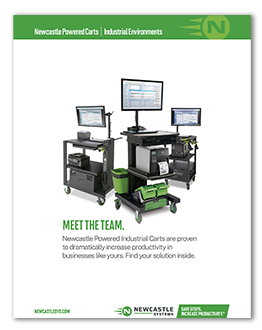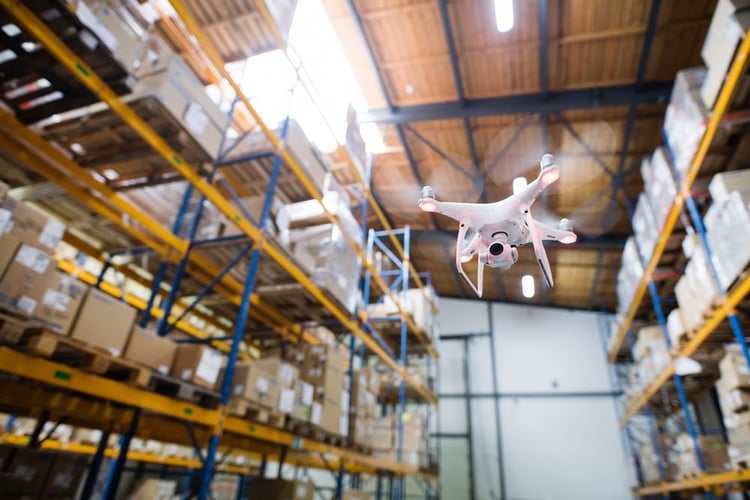
The warehouse industry presents a huge opportunity for new technology solutions to boost productivity and provide businesses with competitive advantages. Many companies in this sector have been implementing solutions like robotics, RFID tags, and automated picking systems. Another innovation is warehouse drones.
Drones are one of the latest automation trends aimed at reducing costs and improving efficiency in the warehouse. But how does this technology work, and what are its benefits? Here’s what you need to know about drone implementation in the warehouse industry.
4 Ways Drones are Being Used in the Warehouse Industry
Today’s warehouses are bigger and more complex than ever. As the demand for eCommerce products skyrockets, the average size of a warehouse has ballooned to accommodate consumer preferences.
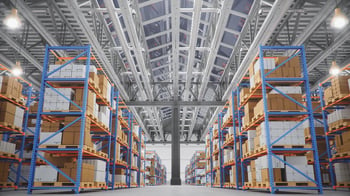 The typical warehouse is around 50,000 square feet. But they can reach as big as 4 million square feet. Warehouses have grown up as well as out. Some have mezzanines that use their vertical space, and others have narrow aisles to maximize shelving.
The typical warehouse is around 50,000 square feet. But they can reach as big as 4 million square feet. Warehouses have grown up as well as out. Some have mezzanines that use their vertical space, and others have narrow aisles to maximize shelving.
What these warehouses all have in common is that they are large, busy, and often congested. It’s no wonder warehouse owners are considering every type of automation tool possible to improve efficiency. Some companies, like Amazon and Walmart, are already experimenting with drones for product delivery.
But drones can also be used inside the warehouse. Here are four main ways drones are already being used to support the warehouse industry.
1. Inventory Management
Proper inventory management is critical in the warehouse industry. It is the process of accounting for, ordering, and organizing product stocks to ensure items on hand are in good shape (i.e., not damaged or expired) and of sufficient quantity to fulfill anticipated needs. But manual inventory control can be prone to human error and costly in terms of labor and potential mistakes.
Drones are being used for inventory management for the following tasks:
- Stocktaking
- Inventory audits
- Cycle counting
- Item searches
- Buffer stock maintenance
Instead of having workers go around the warehouse counting items and scanning barcodes by hand, drones can perform these tasks automatically. Drones can confirm that the correct items are where they should be, keep track of your stock levels, and search for items that are listed as out of stock or missing.
2. Inspections
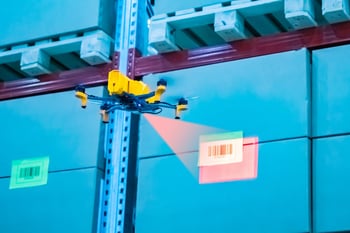 Any business environment that gets constant use, like a warehouse, will also be prone to wear and tear. A broken shelf, dislocated stair rail, or cracked flooring can create a serious safety hazard. A damaged piece of equipment can stall operations and cost the company time and money.
Any business environment that gets constant use, like a warehouse, will also be prone to wear and tear. A broken shelf, dislocated stair rail, or cracked flooring can create a serious safety hazard. A damaged piece of equipment can stall operations and cost the company time and money.
Traditionally, detailed inspections in the warehouse would be done in person, with a manager walking through the aisles examining key equipment, racks, floors, walls, and ceilings. Drones can automate and speed up this inspection process. For example, a drone can fly through the warehouse to capture visual data that managers can review later. Even better, artificial intelligence solutions can take an initial pass at that data and identify potential areas of concern.
3. Indoor Intralogistics
Warehouses are busy facilities that often need to relocate small items from one area to another. Drones can assist with these intralogistics tasks. For example, a drone can transport a machine part to the area of the warehouse where a repair is taking place. Drones can also move small products for fulfillment activities. However, the gripping, payload, and navigation capabilities of today’s drones remain limited. These types of applications will certainly expand in the future.
4. Surveillance and Security
As mentioned earlier, warehouses can be massive buildings. Many of them are full of expensive equipment and products, making them attractive targets for thieves. Having security measures in place is essential. Fortunately, drones can fly through a warehouse 24/7 and provide a live feed that security staff can watch from a central location. Alternatively, AI-enabled software can analyze the video footage produced by a drone to alert owners to any unusual activity.
Benefits of Using Drone Technology in the Warehouse
Here are just a few of the benefits of using drone technology in the warehouse:
1. Improved Cycle Counts
The manual and repetitive inventory counting is a common checks and balances process in a warehouse. But it’s time-consuming and prone to human error. Drones can make this job faster and more accurate by flying through the warehouse with an RFID reader that collects real-time data.
2. Lower Operations Costs
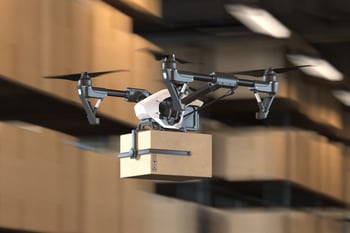 It’s costly to hire and pay workers for things like manual inventory counts. You can reduce these costs by automating the process using drones. These solutions can also lower your costs when they help you avoid machinery breakdowns or serious accidents on the warehouse floor.
It’s costly to hire and pay workers for things like manual inventory counts. You can reduce these costs by automating the process using drones. These solutions can also lower your costs when they help you avoid machinery breakdowns or serious accidents on the warehouse floor.
3. Better Safety Records
Drones can take dangerous and repetitive tasks off of a worker’s shoulders, improving overall workplace safety. For example, a drone can alert management of serious safety hazards. It can also reach products on high shelves so workers don’t have to make the climb.
4. Seamless Inventory Searches
Searching for products during the picking process is one of the most time-consuming and costly activities in a warehouse. A drone camera can perform these searches seamlessly and report back to human workers.
How Warehouse Drone Technology Works
We’ve all seen toy drones that end up in a neighbor’s tree. So, will your warehouse drones get lost in the storage racks or, worse, crash into workers below? Ideally not. Similar to autonomous mobile vehicles (AMVs), these more sophisticated drones are equipped with navigation technology that allows the unit to avoid obstacles.
Drones can also be equipped with sophisticated sensors and readers to detect RFID tags, temperatures, and other items. In addition, software are algorithms are used to deliver the insights that make these solutions useful for businesses.
There’s a lot of fascination with drones because they have a cool factor. Beyond being fun toys and scary military weapons, drones also have a lot of uses in the warehouse environment. Using sensors, cameras, and the right processing equipment, drones can help improve efficiency in many areas and boost your warehouse’s overall results.
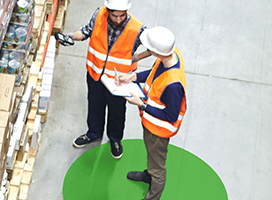
|
7 Ecommerce Warehouse Secrets that Deliver Big ROIDownload |









